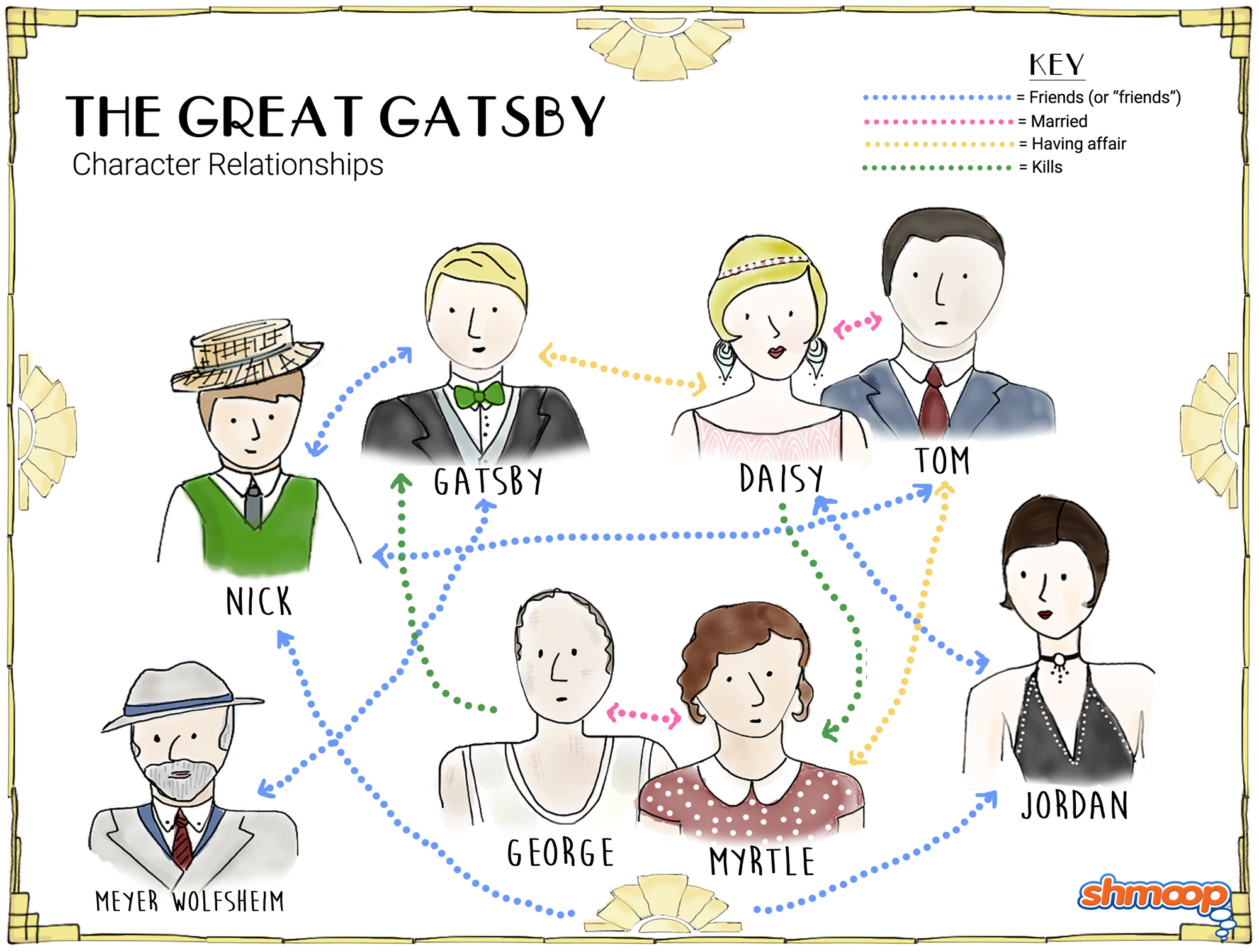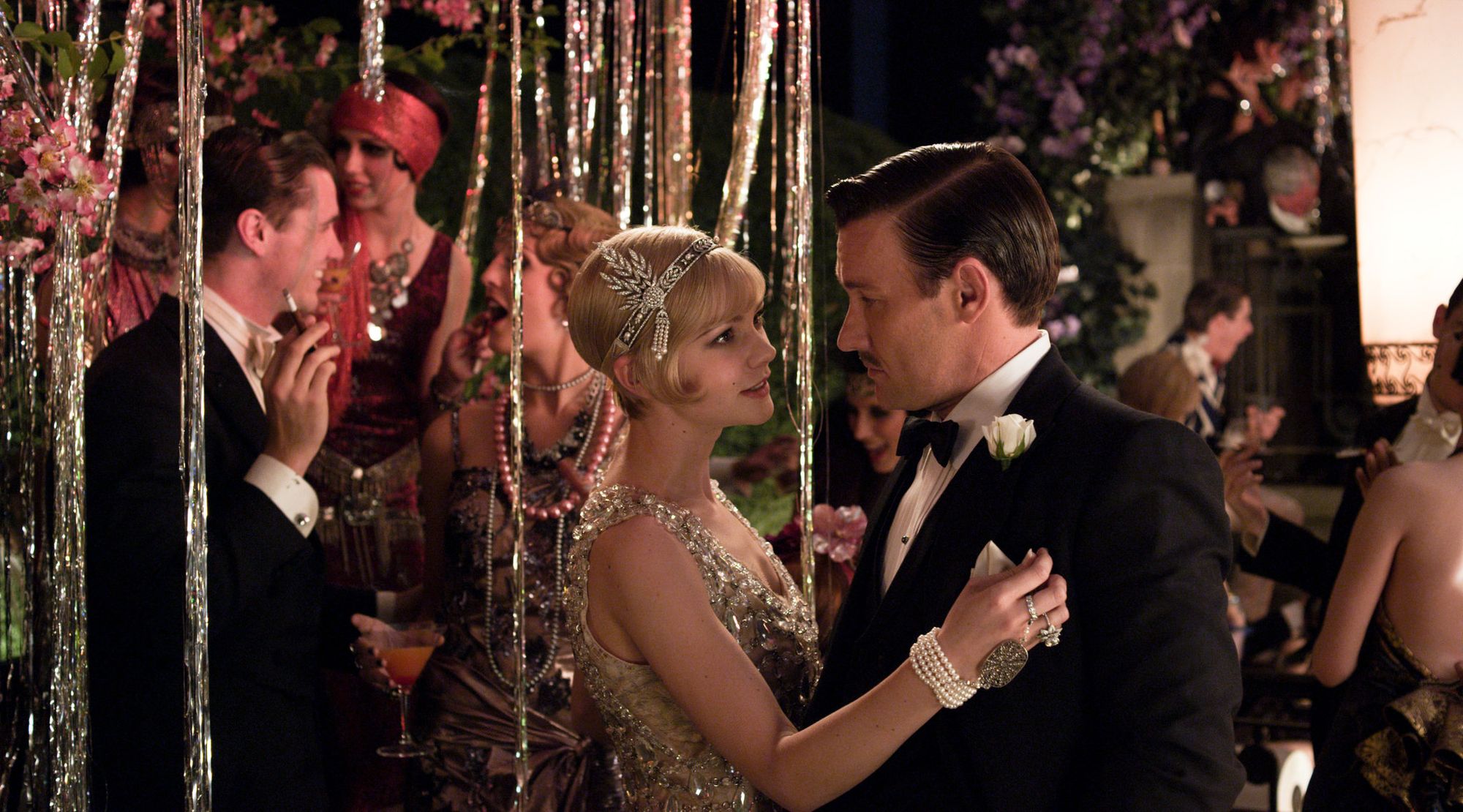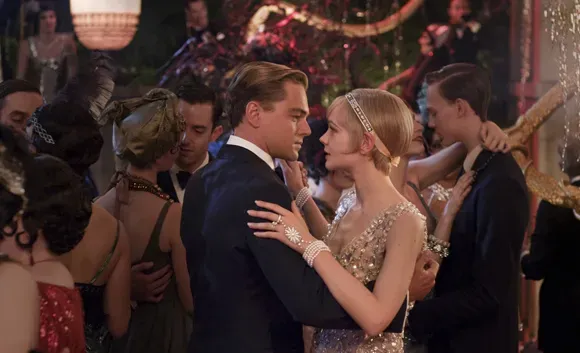Love and Relationships in The Great Gatsby: Character Analysis
Healthy relationships are a powerful connection that provides meaning to lives, often leading people to commit selfless acts to preserve the contentment of their loved ones. However, unhealthy relationships are doomed to tragedy as it’s dependent on a life of deceit to fulfill one’s unattained desires.
The Great Gatsby by F. Scott Fitzgerald is a novel set in the Roaring Twenties of New York. Love was deemed unimportant, and relationships were doomed due to the rising obsession with prosperity and dating for casual social entertainment. In The Great Gatsby, Fitzgerald portrays the instability of relationships based on materialism and economic purposes, especially between Tom and Daisy, Myrtle and George, and Gatsby and Tom.

Tom and Daisy
Tom and Daisy’s relationships preserve the old money and maintain a high status, leading to a life of lying, cheating, and restlessness. Class is highlighted as a stronger bond than love, mainly when a position in the roaring 20s dedicated the fate of entire family lines. Indeed, Tom and Daisy had an intimate relationship on their honeymoon, such as “the day [Tom] carried [Daisy] down from the Punch Bowl to keep [her] shoes dry”. However, their intimate relationship was engulfed by Daisy’s yearning for security in the old money aristocracy and Tom’s desperation for obedient women to boost his self-esteem.
Tom was “God knows where” at the birth of their daughter, Pammy, presumably cheating on Daisy. Tom’s abandonment of Daisy portrays the authority of men over women; they would face no consequences for their actions, justified by Daisy’s obedient wish to be a “beautiful little fool”. She wishes to be too ignorant to perceive the situation around them, for it would allow her to appreciate the luxuries of Tom’s life without being aware of his unfaithful behavior. Ironically, she is the “fool” for letting materialism, particularly on her “beautiful” physical appearance, influence her life decisions.
The passage shows how Fitzgerald perceived gender roles functioned in the Roaring Twenties: men were the breadwinners who chased the American Dream, while women like Daisy were no more than “a beautiful little fool” for their husbands.

Myrtle and George
Myrtle and George were once two passionate lovers, but Myrtle’s selfish aura for wealth led her to fall in love with Tom despite her social problems in their new relationship. The source of Myrtle and George’s fractured relationship is their differing motives and personalities.
Ironically, Myrtle is presented as the leader in this relationship as she orders George to “get some chairs”, which makes her a symbol of a “flapper” in the Roaring Twenties. George is covered in a “veil” of gray dust that denotes his desolation and hopelessness, while Myrtle allures “from the cement color” and is full of vitality.
Instead of reconciling with each other, Myrtle’s obsession with money blinds her to the concept of love due to her growing dissatisfaction with the poor lifestyle. Myrtle has no trouble sacrificing love for wealth, although she does not realize Tom only materializes her. Tom has a pattern of having affairs with lower-class women, for it would portray his superiority.
The Buchanans, though not in a perfect relationship, can retreat into their status and old money to avoid their relationship problems. The Wilsons, however, do not have that privilege. They have long been facing an unstable relationship due to financial troubles and Myrtle being more ambitious than George. The contrasting marriages of the Buchanans and the Wilsons help illustrate Fitzgerald’s critique of old money and the vulnerability of the working class to strife and tragedy when chasing wealth.

“He took what he could get, ravenously and unscrupulously—eventually, he took Daisy one still October night, took her because he had no real right to touch her hand.”
In this passage, Nick provides some background surrounding Gatsby and Daisy’s romantic relationship in their younger years, before Daisy’s marriage to Tom. The Gatsby in this passage is dramatically different from the one Nick has come to know throughout his time on the West Egg. Rather than the impossibly polished party host with the stunning mansion, Gatsby is a “penniless young man without a past.” At that point, Gatsby could not provide for Daisy because he had neither wealth nor status. It’s with the idea of being able to care for Daisy and, therefore, spend his life with her that he spends the next several years building his wealth.
It’s noteworthy that, in this passage, Gatsby “took her” because he had no real right to touch her hand. In other words, he couldn’t hold her hand as a suitable partner or put a ring on her finger, so he had sex with her instead. This passage, then, reveals Gatsby’s feelings of inadequacy fueling his fortune-building and self-reinvention efforts over the next several years; he has taken Daisy in private and wants to have her in public, too.
The Roaring Twenties marked a decade of widespread post-war prosperity, and Fitzgerald captures the frenzy of society through the relationships in The Great Gatsby. Dating in the Roaring Twenties was commonplace for casual social entertainment instead of its intended purpose for courtship. Fitzgerald criticizes the recklessness of the Roaring Twenties through the destruction and instability of every relationship based on materialism and economic goals: Tom and Daisy, Myrtle and George, Gatsby, and Daisy.
